Author: Lucio Chachamovich

-
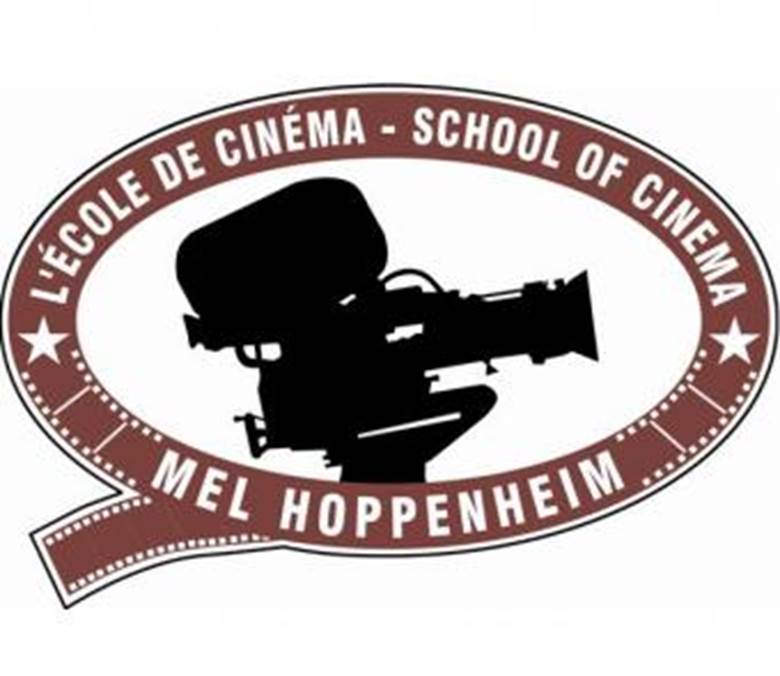 Logo for L’Ecole De Cinema – School of Cinema Mel Hoppenheim at Concordia University in 2014.Photo Credit : Concordia University
Logo for L’Ecole De Cinema – School of Cinema Mel Hoppenheim at Concordia University in 2014.Photo Credit : Concordia University -
 Mel Hoppenheim at Mel's Cité du Cinéma studio, in Montreal, December 8, 2010.Photo Credit : Dave Sidaway for the Montreal Gazette
Mel Hoppenheim at Mel's Cité du Cinéma studio, in Montreal, December 8, 2010.Photo Credit : Dave Sidaway for the Montreal Gazette
Mel Hoppenheim
Mel Hoppenheim is a filmmaker, cinematographer, philanthropist and entrepreneur who significantly contributed to the development of the arts through his visionary contribution to the Quebec and Canadian film industry.
Hoppenheim was born in Montreal, and graduated from the famed Baron Byng High School in 1954. He got his start in the film industry by renting cameras and equipment to local cinematographers. In 1965, he founded Panavision Canada, which was so successful that, six years later, he expanded with technical installations in Toronto (1972) and then Vancouver (1977).
In 1988, Hoppenheim made a major investment in the future of moviemaking by purchasing the historic Theatre Expo, which was baptized Cité du Havre as part of the construction of Expo 67. He expanded by building five additional state-of-the-art studios within the new complex.
In 1990 he built eight additional studios under the banner Cite du Cinema Mel’s – making these installations the largest privately owned film studios in North America. These studios were designed to be the most cutting-edge production facilities in the world film and television industry, turning Montreal into a center for the production industry that rivaled Hollywood, attracted renowned film makers and boosted employment in Montreal.
Forward thinking and pre-occupied with encouraging future talent in the film industry, Hoppenheim prioritized Education. He founded the Mel Hoppenheim School of Cinema at Concordia University in 1997, which now counts over 900 students. He was also instrumental in supporting the National Institute of Image and Sound (INIS), a private school specializing in writing, directing and film/television producing.
He is a major philanthropist in healthcare specifically at the Montreal Heart Institute, where he funded the most sophisticated diagnostic and imaging technology in Canada and the Montreal Children’s Hospital where he funded the Chair in Pediatric Neurology. His philanthropy activity has touched numerous other charities.
Hoppenheim’s tremendous contributions to Canadian moviemaking and culture were honoured in 2010 with the honorary Genie Award; in 2012 by the Montreal World Film Festival with the Special Grand Prize of the Americas. He received an Honorary Doctorate from Concordia University in 2008 and was bestowed the Order of Canada, in 2015.
Learn more:
https://www.concordia.ca/finearts/cinema/about/mel-hoppenheim.html
http://www.concordia.ca/finearts/cinema.html

-
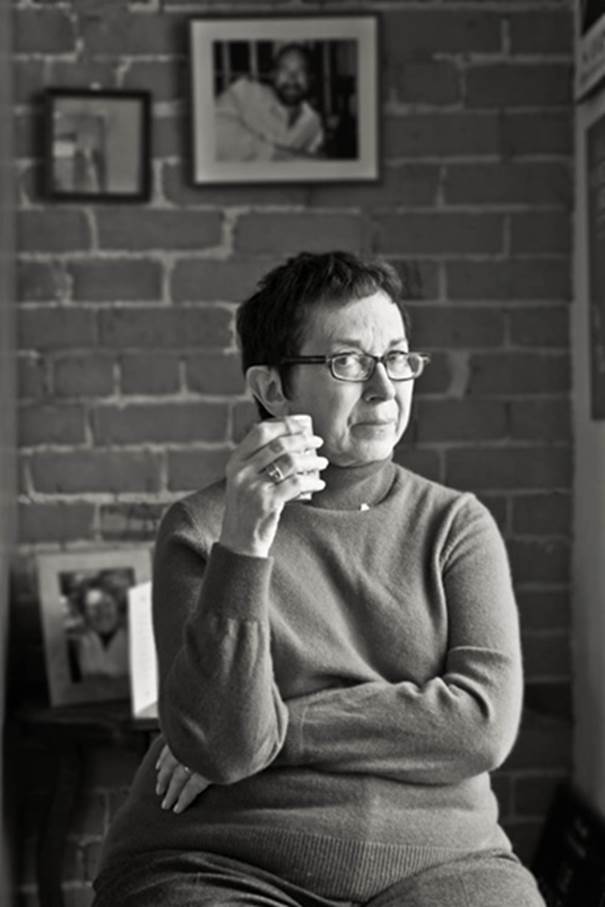 Portrait of Sheila Fischman ca. 2000sPhoto Credit : Lemonhound.com
Portrait of Sheila Fischman ca. 2000sPhoto Credit : Lemonhound.com
Sheila Fischman
Sheila Fischman is considered one of Canada’s finest translators of Quebecois literature, and has brought over 150 contemporary Quebecois novels from French into English.
Born to a Jewish family in Moose Jaw Saskatchewan, Fischman was raised in Ontario. She received a BA in Chemistry and Anthropology, and an MA in Anthropology, from the University of Toronto. After marrying Canadian poet D.G. Jones in 1969, the couple settled in North Hatley, in Quebec’s eastern townships, where she was able to learn living French. At the time, North Hatley had two distinct groups of artists: English and French. Fischman saw that with two languages, she could bring these two groups together, and began hosting mixed gatherings of writers and poets in her home.
Fischman continued this work of bridging language communities after moving to Montreal. She was an editor for The Montreal Star’s book section, as well as a columnist for The Globe & Mail and The Montreal Gazette. She was also a founding member of the Literary Translators’ Association of Canada, and a founding co-editor of Ellipse: Œuvres en traduction/Writers in Translation. Her work as a translator and editor have made Quebecois literature accessible to Anglophone Canada, allowing for the appreciation and celebration of Quebecois culture abroad, including top novelists like Michel Tremblay, Anne Hébert, Kim Thúy and François Gravel.
Fischman’s translations have been honoured with a Governor General’s Award for Translation, and received an astounding 14 nominations. She has won the Molson Prize for the Arts and been a finalist for the Scotiabank Giller Prize. She holds honorary doctorates from the University of Ottawa and the University of Waterloo. She was invested into the Order of Canada (2001) and the National Order of Quebec (2008).
Learn more:
https://en.wikipedia.org/wiki/Sheila_Fischman
http://www.thecanadianencyclopedia.ca/en/article/sheila-fischman/
https://www.vehiculepress.com/subjects/translation/transprofile.html
http://carte-blanche.org/articles/carte-blanche-qa-with-sheila-fischman-2/
http://www.quillandquire.com/book-culture/2013/11/11/qa-sherry-simon-on-honouring-montreal-translator-sheila-fischman/
http://www.cbc.ca/books/2015/04/sheila-fischman-on-the-treasure-hunt-of-translating-canada-reads-winner-ru.html

-
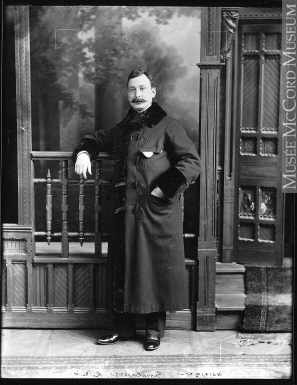 Mortimer Barnett Davis, Montreal, QC, 1891. Wm. Notman & Son. 1891, 19th century. II-94434.Photo Credit : © McCord Museum, Montréal
Mortimer Barnett Davis, Montreal, QC, 1891. Wm. Notman & Son. 1891, 19th century. II-94434.Photo Credit : © McCord Museum, Montréal -
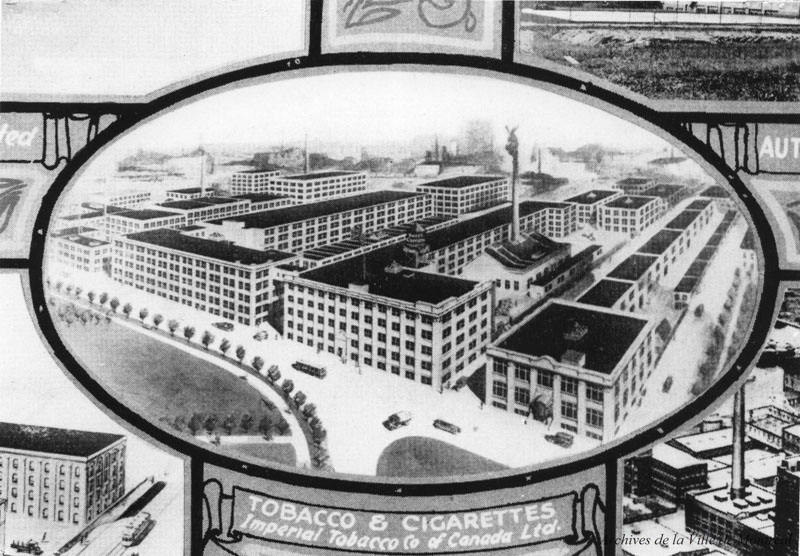 The Imperial Tobacco Company factory in Montreal.Photo Credit : City of Montreal Archives
The Imperial Tobacco Company factory in Montreal.Photo Credit : City of Montreal Archives -
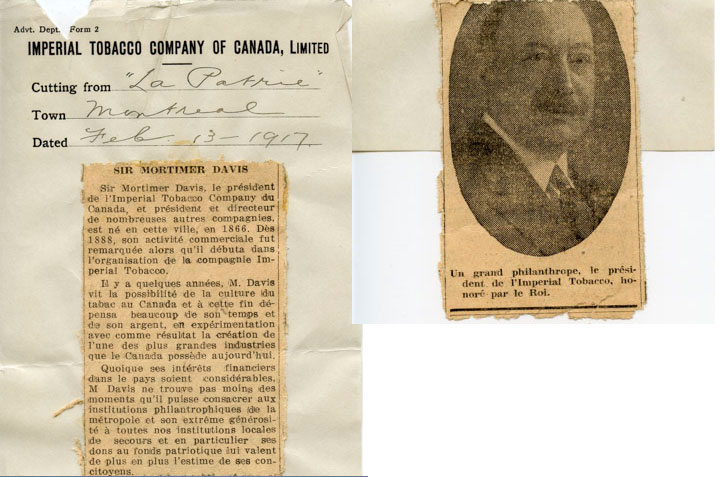 Newspaper clipping detailing Sir Mortimer B Davis from 1917.Photo Credit : Jewish Public Library - Archives
Newspaper clipping detailing Sir Mortimer B Davis from 1917.Photo Credit : Jewish Public Library - Archives -
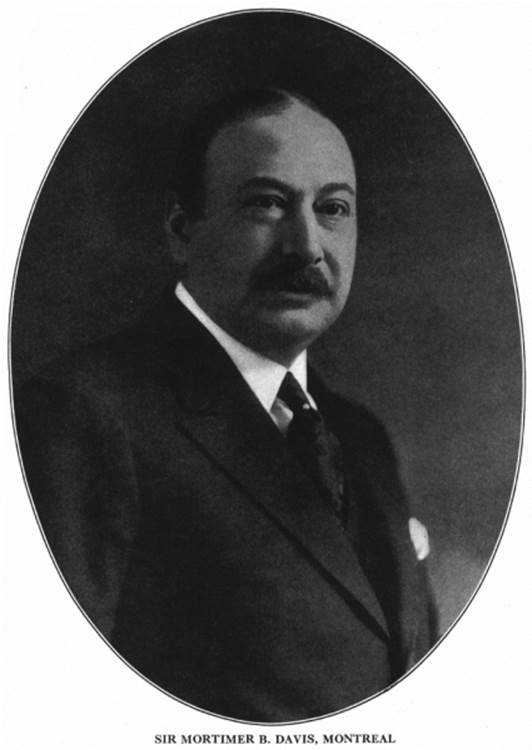 Sir. Mortimer B. Davis in The Jew in Canada (1926).Photo Credit : Alex Dworkin Canadian Jewish Archives
Sir. Mortimer B. Davis in The Jew in Canada (1926).Photo Credit : Alex Dworkin Canadian Jewish Archives
Sir Mortimer B. Davis
Coming soon

-
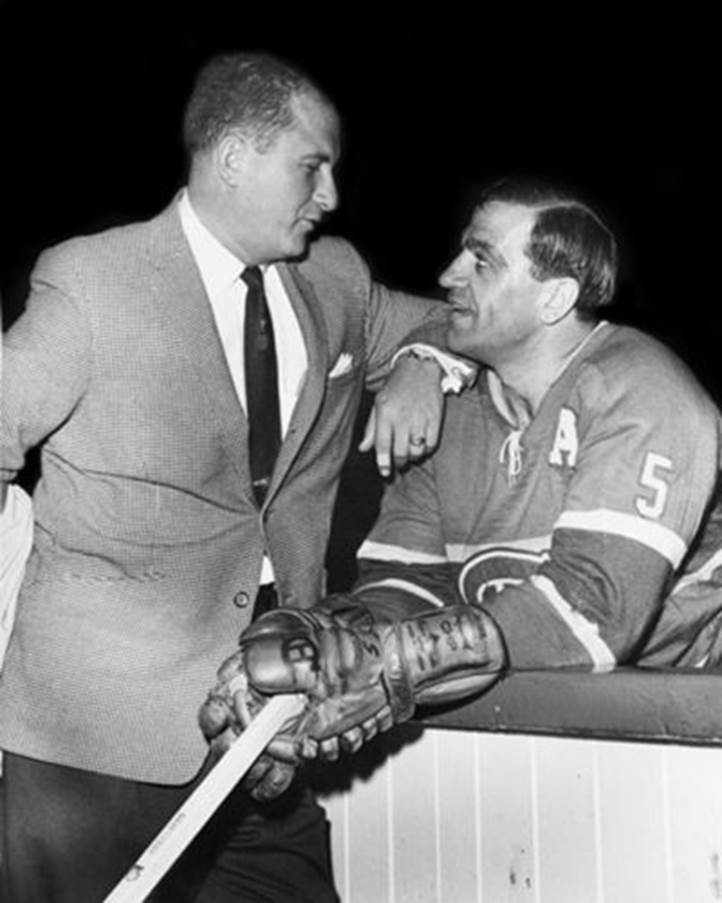 Red Fisher with Boom Boom Geoffrion from the Montreal Canadiens.Photo Credit : Dennis Kane
Red Fisher with Boom Boom Geoffrion from the Montreal Canadiens.Photo Credit : Dennis Kane -
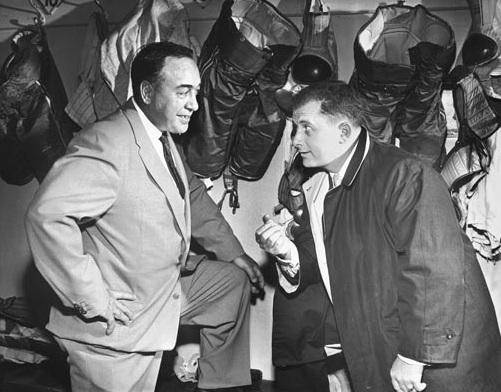 Red Fisher interviewing Toe Blake, often considered the best coach in NHL history.Photo Credit : Montreal Gazette photo files
Red Fisher interviewing Toe Blake, often considered the best coach in NHL history.Photo Credit : Montreal Gazette photo files -
 Red Fisher watches the third period of the Montreal Canadiens and the Toronto Maple Leafs at the Bell Centre in Montreal, September 24, 2005.Photo Credit : Montreal Gazette
Red Fisher watches the third period of the Montreal Canadiens and the Toronto Maple Leafs at the Bell Centre in Montreal, September 24, 2005.Photo Credit : Montreal Gazette
Red Fisher
Red Fisher was a Montreal sports reporter famous for his coverage and thorough knowledge of the Montreal Canadiens.
Born in Montreal, Fisher was nicknamed “Red” because of his hair colour. He began writing about hockey for the Montreal Star in 1954 and remained there until the paper’s closure in 1979, when he moved over to the Montreal Gazette. He quickly became known for his “tell it like it is” writing, and won the Canadian National Newspaper Award three times before officially retired in 2012. He was the longest-serving beat writer on record for an NHL team, having reported on the Canadians for 57 years (through 17 Stanley Cups!).
Fisher had a significant influence over the entire NHL community – Don Cherry claims that Fisher is responsible for getting him fired as Head Coach of the Boston Bruins. Upon his retirement as dean of the Montreal Canadiens reporters, Fisher’s integrity, engagement and fairness were celebrated by Gary Bettman, NHL Commissioner, Geoff Molson, George Gillett Jr., Jacques Demers, Jean Beliveau, Henri Richard, Yvan Cournoyer, Guy Carbonneau and the legendary Dickie Moore, Fisher’s close friend.
Learn more:

-
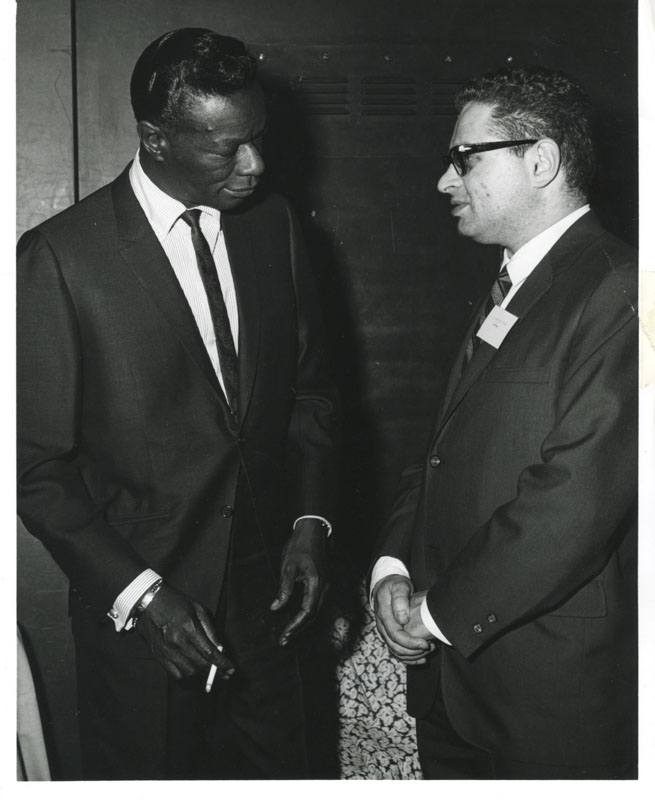 Sam Gesser at his 50th birthday with Nat King Cole (1980).Photo Credit : Jewish Public Library Archives
Sam Gesser at his 50th birthday with Nat King Cole (1980).Photo Credit : Jewish Public Library Archives -
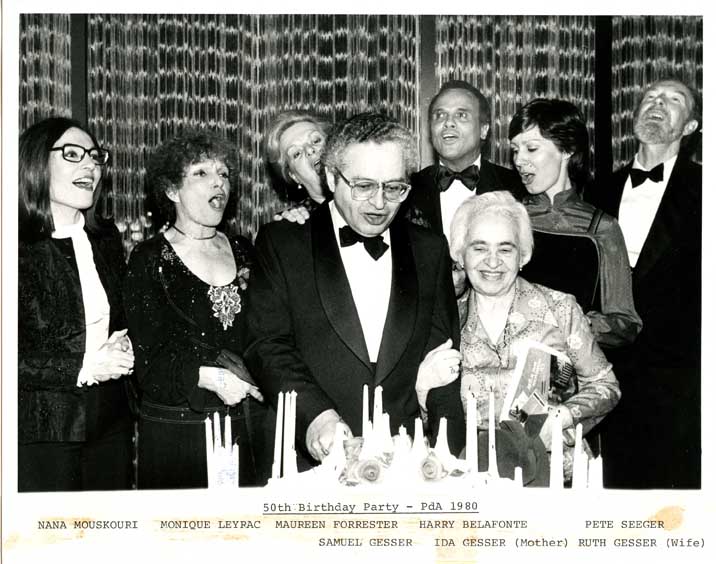 Sam Gesser at his 50th birthday (1980).Photo Credit : Jewish Public Library Archives
Sam Gesser at his 50th birthday (1980).Photo Credit : Jewish Public Library Archives -
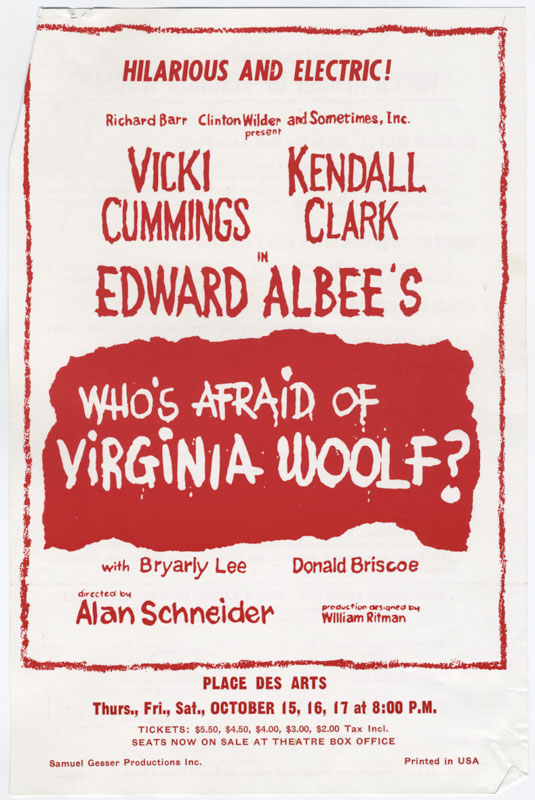 Poster of Who's Afraid of Virginia Woolf? promoted by Sam Gesser.Photo Credit : Jewish Public Library Archives
Poster of Who's Afraid of Virginia Woolf? promoted by Sam Gesser.Photo Credit : Jewish Public Library Archives -
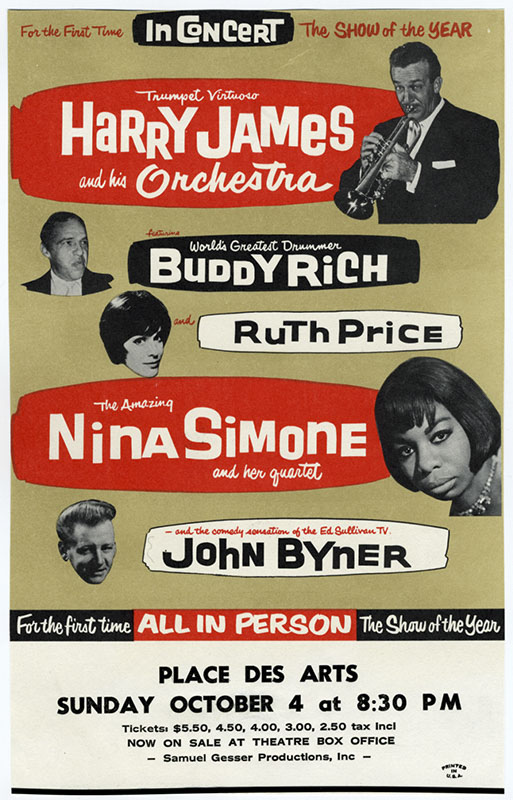 Poster of a concert featuring Harry James, Buddy Rich, Ruth Prince, Nina Simone and John Byner, promoted by Sam Gesser.Photo Credit : Jewish Public Library Archives
Poster of a concert featuring Harry James, Buddy Rich, Ruth Prince, Nina Simone and John Byner, promoted by Sam Gesser.Photo Credit : Jewish Public Library Archives -
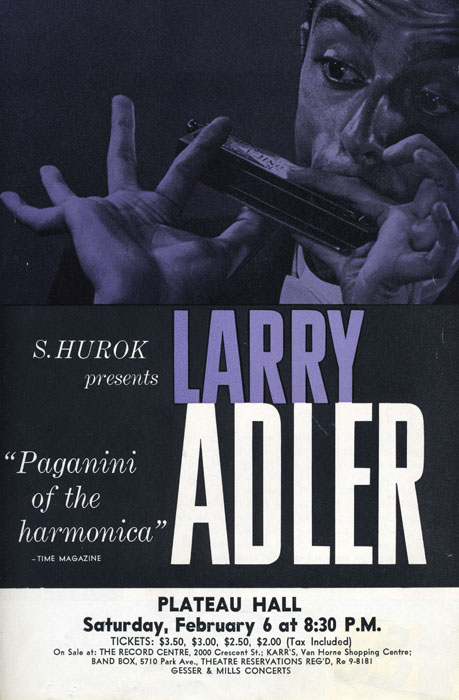 Larry Adler concert poster promoted by Sam Gesser (1950s).Photo Credit : Jewish Public Library Archives
Larry Adler concert poster promoted by Sam Gesser (1950s).Photo Credit : Jewish Public Library Archives -
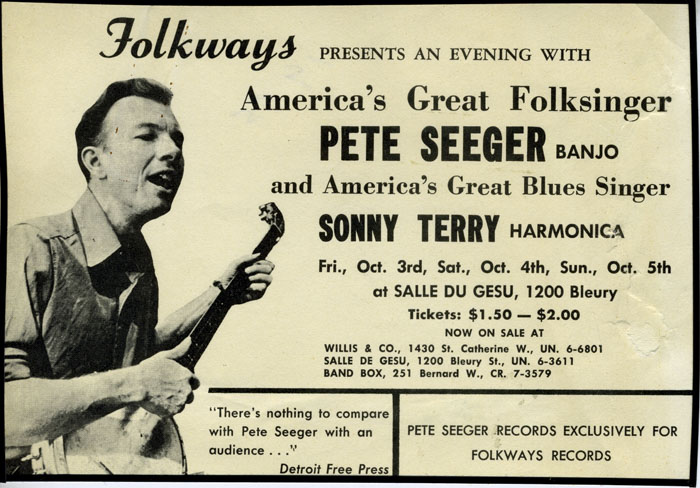 Pete Seeger concert poster, managed and promoted by Sam Gesser (1950).Photo Credit : Jewish Public Library Archives
Pete Seeger concert poster, managed and promoted by Sam Gesser (1950).Photo Credit : Jewish Public Library Archives
Sam Gesser
Sam Gesser was a visionary writer, record producer, and impresario who played a foundational role in jump-starting Canada’s music scene.
Gesser was born in Montreal on January 7, 1930, and grew up in the colourful Plateau Mont-Royal neighbourhood. Growing up, he would sneak into His Majesty’s Theatre to watch the shows and to study the intricacies of scriptwriting. As an adult, his true vocation, in the impresario field, developed almost by chance. While in Chicago in the late 1940s, Gesser happened to purchase a Folkways recording of celebrated blues guitarist Leadbelly. On the back of the album was a listing of other records available from Folkways, none of which were available in Canada, as the record company had no distributor north of the border at that point.
After a meeting in New York with Folkways founder Moses Asch, Gesser signed on as the Canadian representative, and also took on the challenge of tracking down and producing Canadian folk music for the label. From 1950-1964, Gesser produced more than 100 original records for Folkways from songs of First Nations to the music of notable musicians such as Alan Mills, Jean Carignan and Hélène Baillargeon. In addition to this work, Gesser produced records for the Pye, Vox and Premier record labels, as well as writing countless radio and television scripts for CFCF and CBC. While producing records, Gesser got the idea that presenting the artists to live audiences was an excellent way to promote the music.
In 1950, Gesser arranged a concert date for Folkways artist Pete Seeger in Montreal at the L’Érmitage Hall located on Côte-des- Neiges Road, and impresario history was born. Over the ensuing years, Gesser presented over 3,000 performances to local, national and international audiences. His productions brought an immense range of artistry to Montreal; from folk to popular, classical to jazz, international music and dance to Broadway musicals and plays. The success of the Seeger show launched a 50+ year odyssey of showcasing Canadian and international talent to Montreal audiences. In addition to his local shows, Gesser also took on touring challenges for artists such as Harry Belafonte, Tony Bennett and Nana Mouskouri, bringing the live experience to Western Canada, regions of the United States, the Maritimes and small-town Quebec. Gesser helped to found Les Feux-Follets, a music and dance troupe that put Canadian heritage and artistry centre stage.
Gesser also contributed to arts and entertainment through writing. His play “Fineman’s Dictionary,” starring Fyvush Finkel, was presented in 2000 at the Saidye Bronfman Centre, in addition to a staged reading at the Jewish Public Library. “Dancing to Beethoven,” a play written for and acted by blind actors, was presented in 2003 at Place des Arts. In 2006, the cast and the play itself were also the subject of a National Film Board documentary.
Gesser’s dedication to his craft included making a donation of his substantial album collection to the Marvin Duchow Music Library, McGill University. In 2005, he donated his professional archives to the Jewish Public Library Archives. These archives not only document Gesser’s long career and his achievements, but also the history of Canadian culture and entertainment. For making major contributions to the field of arts and entertainment, Gesser was awarded the Order of Canada.
Special thank you to the Jewish Public Library Archives.

-
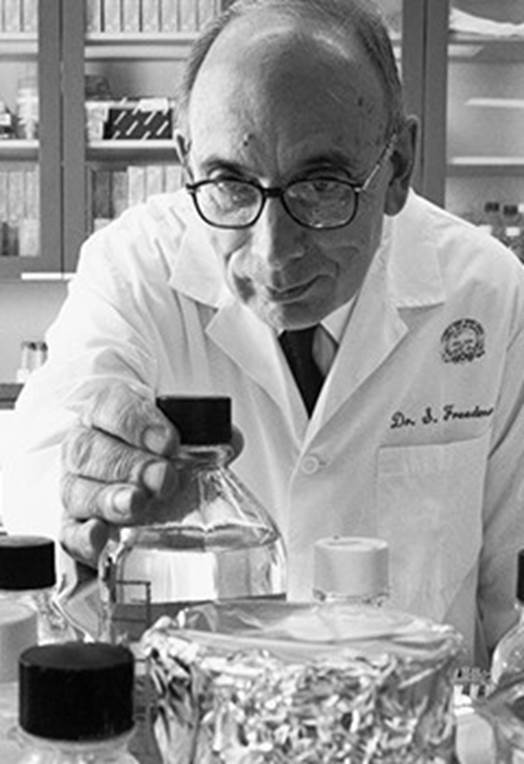 Dr. Samuel O. Freedman.Photo Credit : Fonds de Recherche Santé
Dr. Samuel O. Freedman.Photo Credit : Fonds de Recherche Santé -
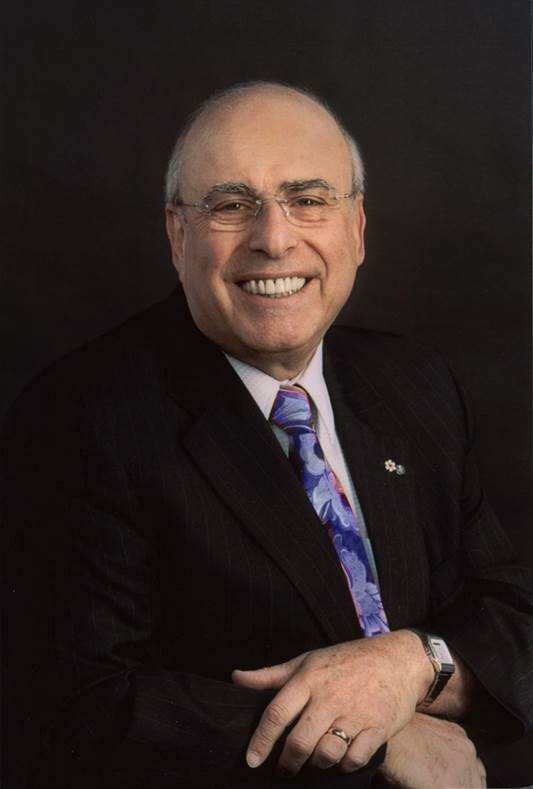 Dr. Phil Gold.Photo Credit : Jewish Public Library - Archives
Dr. Phil Gold.Photo Credit : Jewish Public Library - Archives
Dr. Samuel Freedman & Dr. Phil Gold
Dr. Samuel Freedman and Dr. Phil Gold are award-winning scientists, researchers, physicians and administrators from Montreal.
Freedman graduated from Westmount High School while Gold is a graduate of Montreal’s famed Baron Byng High School. Both went on to receive their medical degrees from McGill University. In 1965, they co-discovered the first human cancer tumor marker to achieve clinical use – carcinoembryonic antigen (CEA). The presence of this antigen, measurable in blood, was first discovered in patients with colorectal cancer, and can detect the presence of other cancers, as well. It has since become a routine medical test in hospitals around the world.
Freedman and Gold have both been named to the Order of Canada and the National Order of Quebec. They are both Fellows of the Royal Society of Canada, and recipients of the Prix Armand Frappier from the government of Quebec as well as the prestigious Gairdner Foundation International Award, seen as second only to the Nobel Prize. They have both received Queen Elizabeth II Jubilee medals. Gold has received the 125th Anniversary of the Confederation of Canada Medal, and has been inducted into the Canadian Medical Hall of Fame.
Among their many senior positions, Freedman served as Dean of Medicine and then Vice-Principal, Academic (Provost) at McGill as well as Director of Research at the Lady Davis Institute at the Jewish General Hospital while Gold was the Douglas G. Cameron Professor of Medicine at McGill and Physician-in-Chief at the Montreal General Hospital.
Learn more:
http://archive.gg.ca/honours/search-recherche/honours-desc.asp?lang=e&TypeID=orc&id=649
https://www.youtube.com/watch?v=yeBMDW8lL_0
http://cdnmedhall.org/inductees/dr-phil-gold

-
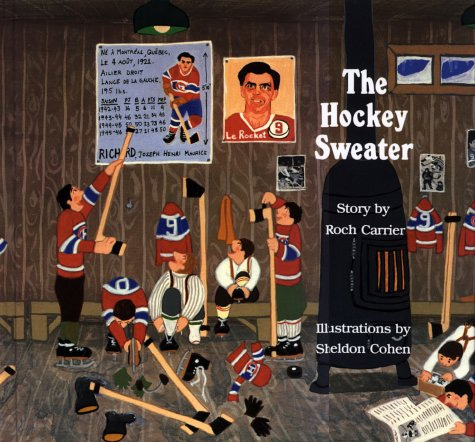 Cohen's illustrated cover of The Hockey Sweater.Photo Credit : Amazon
Cohen's illustrated cover of The Hockey Sweater.Photo Credit : Amazon -
 Sheldon Cohen (2012).Photo Credit : The Montreal Gazette.
Sheldon Cohen (2012).Photo Credit : The Montreal Gazette.
Sheldon Cohen
Sheldon Cohen is a beloved Montreal illustrator and filmmaker, best known for his collaboration with Roch Carrier on the classic short story, The Sweater.
Cohen was born to an immigrant Jewish family in 1949. He received a Bachelor of Science from McGill University in 1972 and went on to study art and animation at Sheridan College. In 1972, he became a trainee at the National Film Board of Canada. There, he began producing short animated films in a whimsical style. The stories reflected Quebecois culture as well as his experiences growing up in a Yiddish-speaking neighbourhood of Montreal.
Cohen’s adaptation of The Sweater became an instant classic and was shown at primary schools throughout Canada; the film received 15 international awards, including the BAFTA Award for Best Animation. Another of his most successful works is the short animation, The Three Wishes – the story of a poor junk peddler and his wife in Montreal. Cohen came out of retirement in 2015, after a near-death experience, to make his acclaimed animated film, My Heart Attack.
Cohen was awarded the Governor General’s Award for French-language children’s illustration and is considered one of Canada’s most prominent children’s animators.
Learn more:
http://bysheldoncohen.blogspot.ca/
https://www.nfb.ca/film/sweater/
https://www.youtube.com/watch?v=kSfiUVGCcSc

-
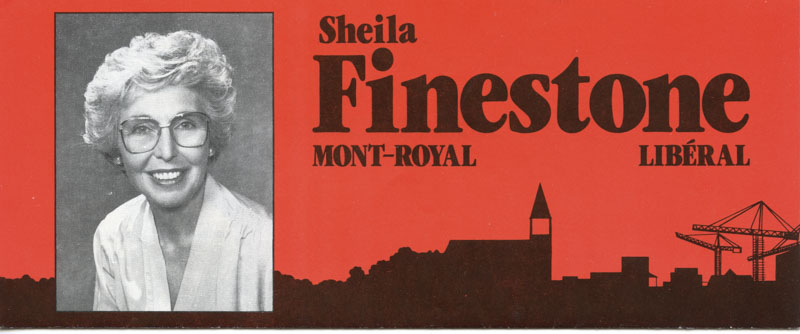 Pamphlet for Sheila Finestone, Liberal M.P for Mont Royal (1986).Photo Credit : Jewish Public Library Archives
Pamphlet for Sheila Finestone, Liberal M.P for Mont Royal (1986).Photo Credit : Jewish Public Library Archives -
 Pamphlet for Sheila Finestone, Liberal M.P for Mont Royal (1986).Photo Credit : Jewish Public Library Archives
Pamphlet for Sheila Finestone, Liberal M.P for Mont Royal (1986).Photo Credit : Jewish Public Library Archives -
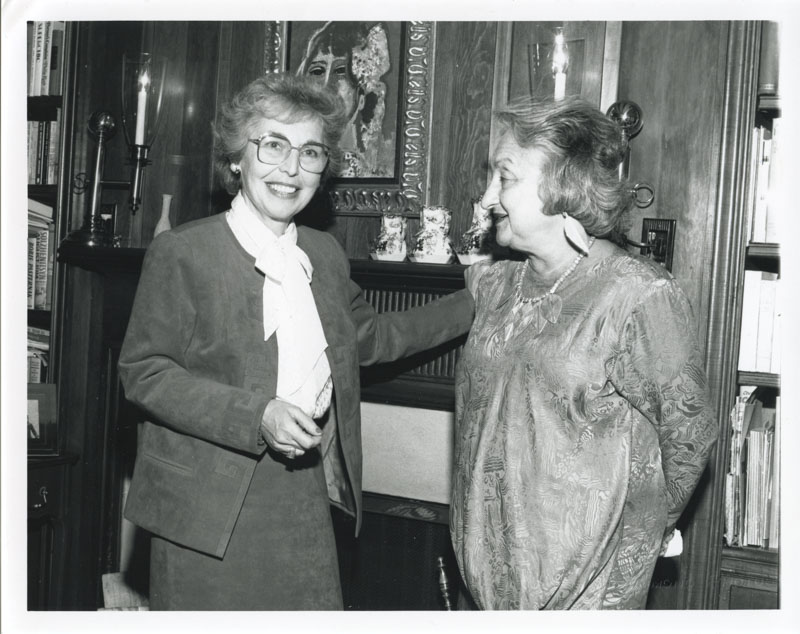 Sheila Finestone, M.P. [left], chats with feminist/author Betty Friedan during the latter's visit under the auspices of the Canadian Associates of Ben-Gurion University of the Negev.Photo Credit : Jewish Public Library Archives
Sheila Finestone, M.P. [left], chats with feminist/author Betty Friedan during the latter's visit under the auspices of the Canadian Associates of Ben-Gurion University of the Negev.Photo Credit : Jewish Public Library Archives -
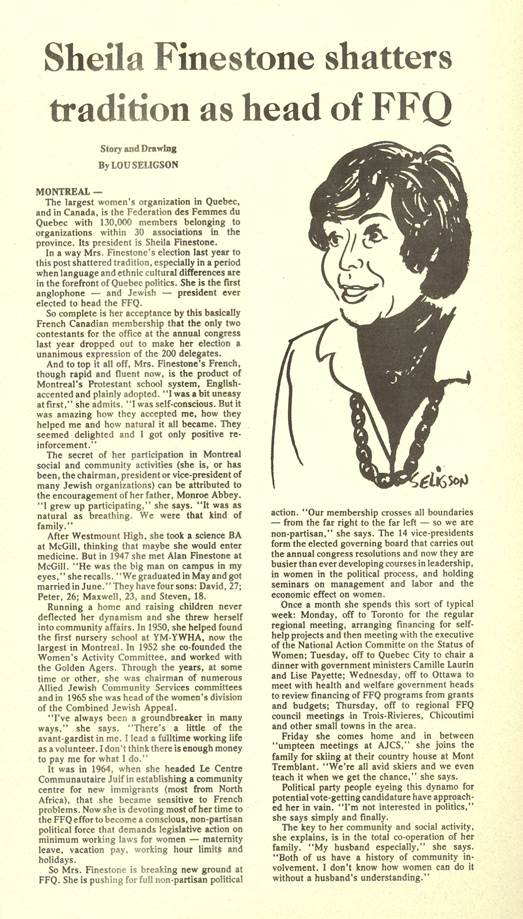 Article detailing Sheila Finestone’s leadership at the Fédération des femmes du Québec.Photo Credit : Jewish Public Library Archives
Article detailing Sheila Finestone’s leadership at the Fédération des femmes du Québec.Photo Credit : Jewish Public Library Archives -
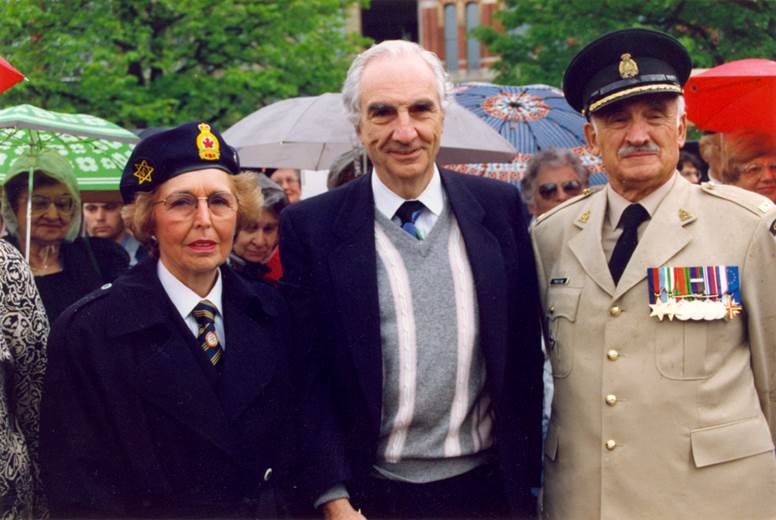 Sheila Finestone with BJ Finestone and her brother Stanley Abbey at a Veteran’s Memorial and Anniversary event in Ottawa (1994).Photo Credit : Alex Dworkin Canadian Jewish Archives
Sheila Finestone with BJ Finestone and her brother Stanley Abbey at a Veteran’s Memorial and Anniversary event in Ottawa (1994).Photo Credit : Alex Dworkin Canadian Jewish Archives -
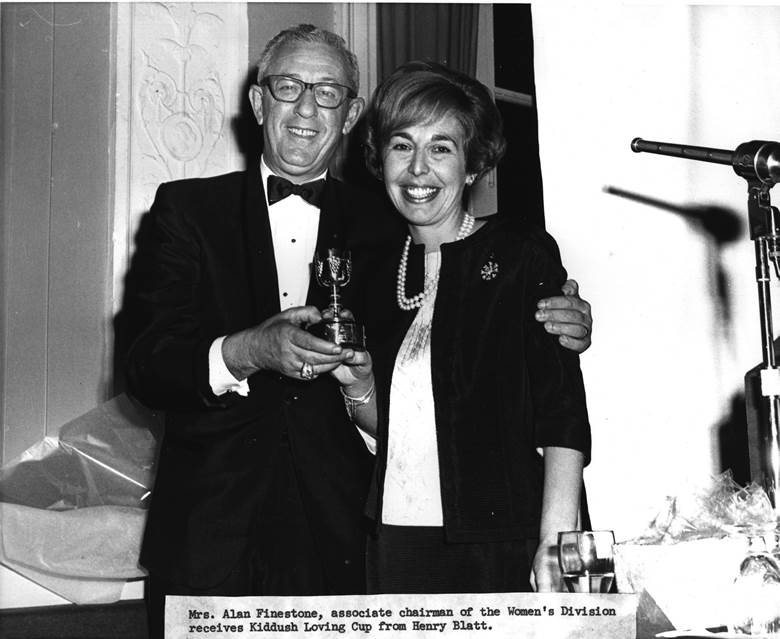 H. Blatt with Mrs. Sheila FInestone, associate chairman of the Women’s Division receives Kiddush Loving Cup from Henry Blatt.Photo Credit : Alex Dworkin Canadian Jewish Archives
H. Blatt with Mrs. Sheila FInestone, associate chairman of the Women’s Division receives Kiddush Loving Cup from Henry Blatt.Photo Credit : Alex Dworkin Canadian Jewish Archives -
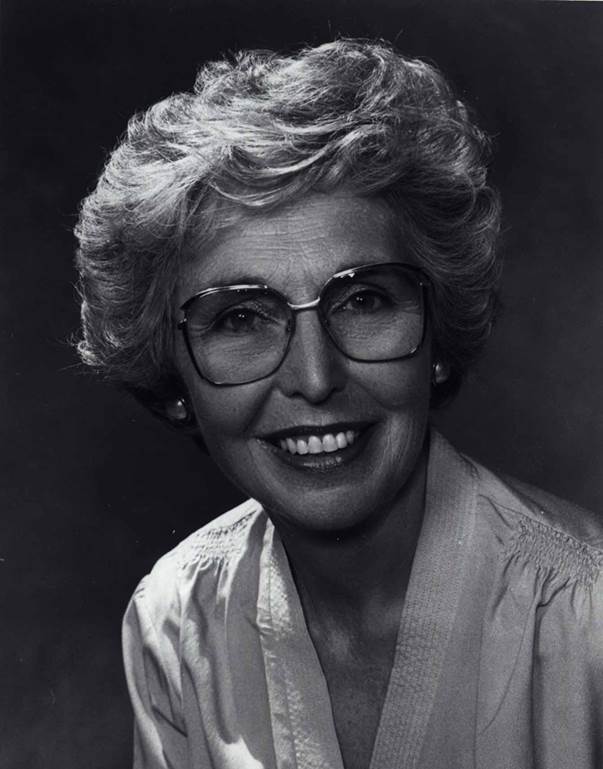 Sheila Finestone.Photo Credit : Alex Dworkin Canadian Jewish Archives
Sheila Finestone.Photo Credit : Alex Dworkin Canadian Jewish Archives
Sheila Finestone
Sheila Finestone was a notable politician from Montreal who dealt with a range of cultural and multicultural issues, from the protection of human rights to the promotion of equality for women and minorities.
Finestone was first elected in 1984 as a Member of Parliament for the Liberal Party for the Mount Royal riding, a riding she would hold for more than a decade. Between 1984 and her appointment to the Senate in 1999, Finestone held a wide range of critical positions in the public and philanthropic spheres.
In the 1990s, Finestone was appointed as Secretary of State for Multiculturalism and the Status of Women. She served as President of the Canadian Inter-Parliamentary Union, and was active in promoting human rights and women’s rights. She was a founding member of the Board of Alliance Quebec. She served as the first Anglophone President (1977-1980) of the 130,000 member coalition, “La Federation des Femmes du Quebec,” was Past President of the Women’s Federation of Allied Jewish Community Services and Combined Jewish Appeal, as well as Neighbourhood House Services of the YM-YWHA.
She was also the driving force behind the establishment of the Centre Communautaire Juif. Finestone was a member of the Board of Trustees of AJCS and the YM-YWHA. She was a member of the Board of Directors of the Montreal Heart Institute Foundation, the Quebec Heart Foundation, the Information and Referral Centre of Greater Montreal, La Fondation Therese-F. Casgrain, and the Shawbridge Youth Centres.
Finestone was Vice President of the Caldwell Residence for the Well Aged, and is currently a member of the Joint Committee on Ashkenazi-Sephardic Relations (CJC-AJCS). At CJC, Finestone is or was a member of the CJC Joint Public Relations Committee, the National Law and Social Action Committee, and an advisor to the Status of Women Committee of CJC; member of the Coalition for Pension Reform, the Coalition against Media Violence and the Interfaith Task Force for Soviet Jewry. She has chaired committees which have presented briefs to federal and provincial parliamentary commissions on a wide range of issues, including the Charter of Rights and Freedoms, Proposed Revisions to the Labour Code, the Civil Code, the Federal Criminal Code and the Youth Protection Act, the Royal Commission on the Status of Women and the Service de la Garde d’Enfance.
As political attaché to the Quebec Liberal Party leaders Claude Ryan, Gerald D. Levesque and Robert Bourassa, Finestone had the special responsibility of informing them of the concerns of the minority communities. She served on the Quebec Liberal Party Policy Commission and is/was Chairman of the Commission on Aging. Prior to this, she was the first Director of Youth Protection for Jewish Family Services. Finestone retired from politics in 2001.
Special thank you to the Jewish Public Library Archives.

-
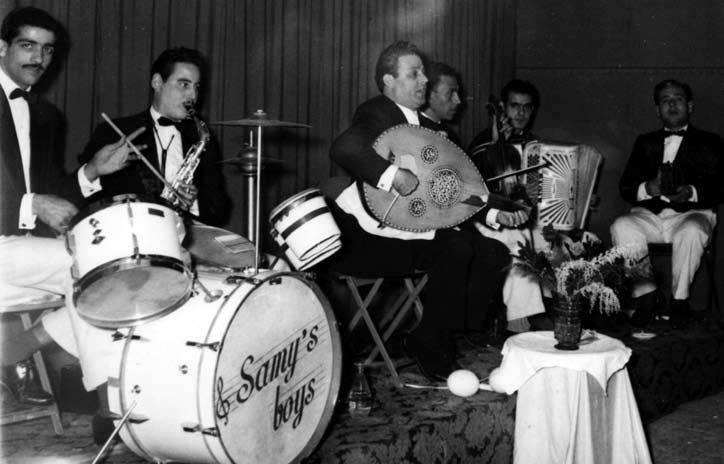 Samy's Boys.Photo Credit : Samy Elmaghribi Foundation
Samy's Boys.Photo Credit : Samy Elmaghribi Foundation -
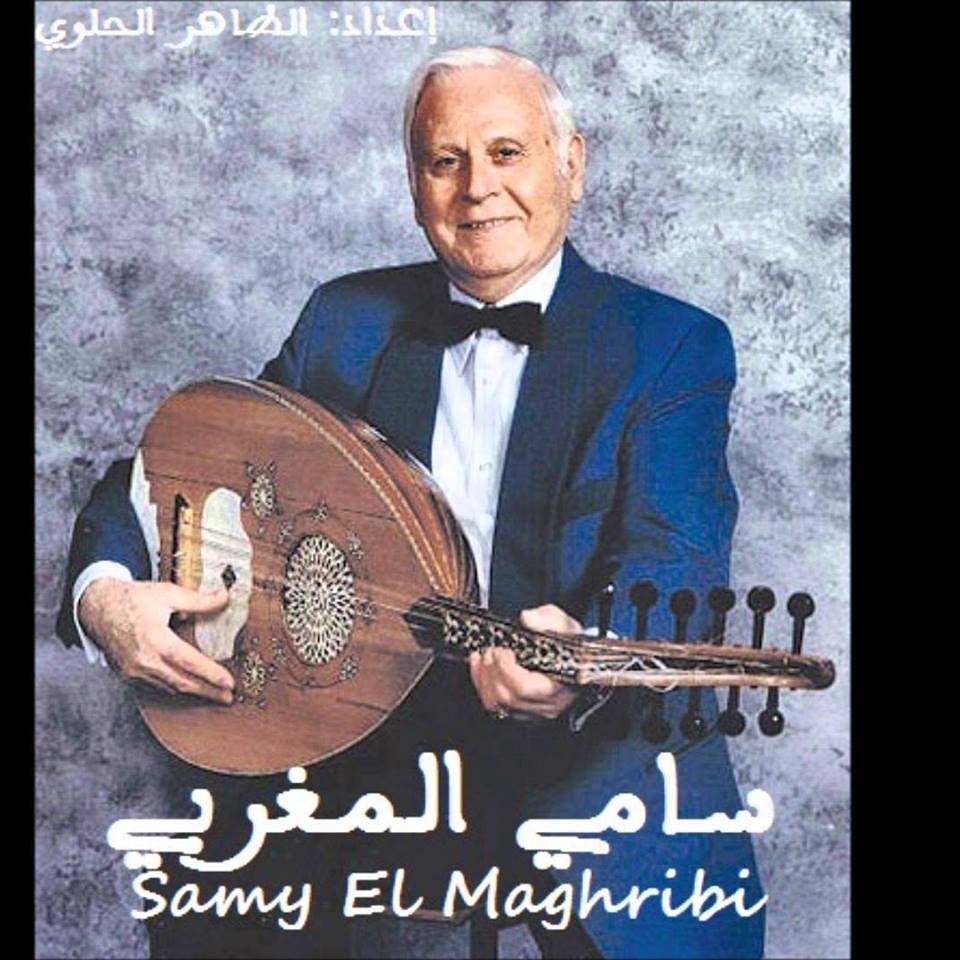 Samy Elmaghribi.Photo Credit : Samy Elmaghribi Foundation
Samy Elmaghribi.Photo Credit : Samy Elmaghribi Foundation -
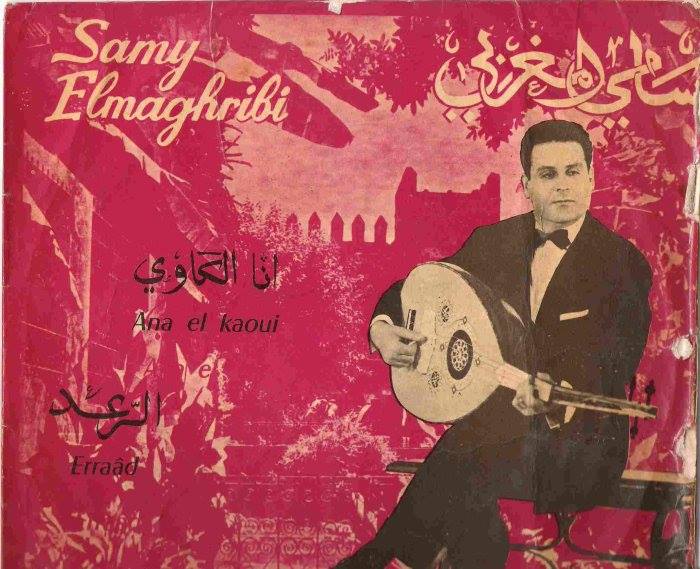 Samy Elmaghribi album cover.Photo Credit : Samy Elmaghribi Foundation
Samy Elmaghribi album cover.Photo Credit : Samy Elmaghribi Foundation -
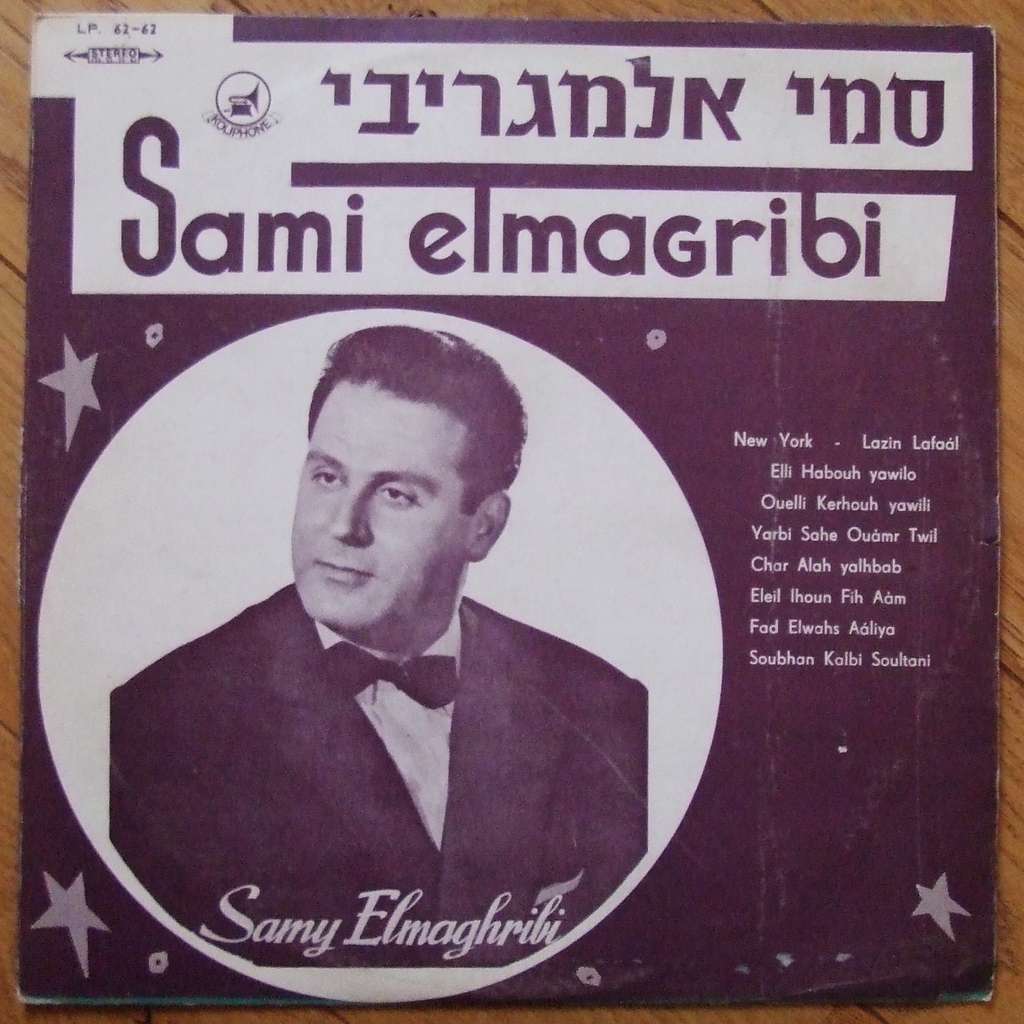 Samy Elmaghribi album cover.Photo Credit : Samy Elmaghribi Foundation
Samy Elmaghribi album cover.Photo Credit : Samy Elmaghribi Foundation
Samy Elmaghribi
Samy Elmaghribi was a beloved 1950s radio star in Morocco and Algeria, cantor in Montreal, and music director in Israel.
Salomon Amzallag was known in the Montreal Jewish community both as a long-standing first cantor of the Spanish & Portuguese Synagogue (1967-1984), and as Samy Elmaghribi, a world-renowned singer, songwriter and composer of Arab-Andalusian music.
Salomon Amzallag was born in Safi (Morocco), on April 19, 1922. From early childhood, he cultivated his unique talent for music and song, starting at the synagogue with his father, and later learning the Andalusian repertoire with great masters in Rabat (Morocco). He soon became a star performer and composer of traditional and popular music with a fan following throughout North Africa and beyond, and founded his own recording company under the label “Samyphone.” Samy Elmaghribi was also a favourite singer of the late kings of Morocco Mohammed V and Hassan II. He composed a number of Moroccan patriotic songs and hailed the return from exile of King Mohammed V in 1955 with a special composition, “Alef hniya u hniya” (A thousand welcome greetings), that won public popularity.
Salomon Amzallag never renounced his initial love for Jewish liturgy. In addition to his own Sephardic ancient melodies and poems, he performed many other liturgical genres, including middle-eastern and Ashkenazi cantorial classics. He enjoyed a long and successful liturgical career, both at the Spanish & Portuguese Synagogue in Montreal, and as a guest cantor in various synagogues throughout the world. He performed in a number of cantorial concerts in Montreal, and taught Sephardic liturgy, namely at Yeshiva University in New York. Some of his students, including his suc’cessor Cantor Yehuda Abittan, became leading cantors in Canada, France and Israel. Salomon Amzallag struck the right balance between the sacred and the secular facets of his career, and even wrote a song about his response to this apparent dilemma, “Enghenni Wenselli. As Samy Elmaghribi, he followed the paths of exile of his audiences and reached out to them from Paris to other cities in France, from New York to Los Angeles and Caracas (Venezuela), and from Israel back to Morocco. In Montreal, he gave three major concerts at the Maisonneuve theatre hall of Place des Arts (1978, 1984, 2005) and one at Théâtre Outremont (2003).
In Israel, he founded the Merkaz Piyyut Veshira, a centre for Sephardic music where he taught as pedagogical director from 1988 to 1994. During those years, he led a student choir in a series of concerts accompanied by an orchestra largely comprised of newly arrived Russian musicians, which later became the Israel Andalusian Orchestra. On April 27, 2005, Samy Elmaghribi took part in a tribute concert at the Tel Aviv Opera Hall, honouring his long career as a singer and teacher and celebrating the Israel Andalusian Orchestra’s 10th anniversary.
After retiring in Montreal in 1996, he continued to travel the world, and the most noteworthy performances of his later years include the Festival de Chant Gharnati in Rabat and Oujda (1999), and the Festival arabo-andalou (Arab-Andalusian Festival) held at UNESCO in Paris (2000). In 2006, he was the guest of the famous Moroccan TV music show Shada al alhan, a recording that went viral on YouTube.
Throughout his life, Salomon Amzallag crossed geographic, religious and cultural boundaries to extoll universal values through his art and create communion among his diverse audiences. He was acclaimed by both Jews and Muslims as one of the most talented representatives of the Arab-Andalusian musical tradition.
Salomon Amzallag passed away in Montreal on March 9, 2008. That same year, his dear wife Messody received the National Merit medal posthumously bestowed on Samy Elmaghribi by King Mohammed VI. Messody Cohen-Amzallag passed away in Ashdod on April 5, 2015. Samy and Messody’s children created the Samy Elmaghribi Foundation to perpetuate their teachings of respect for tradition, openness to others and generosity through the love of music.
Special thanks to Yolande Amzallag.

-
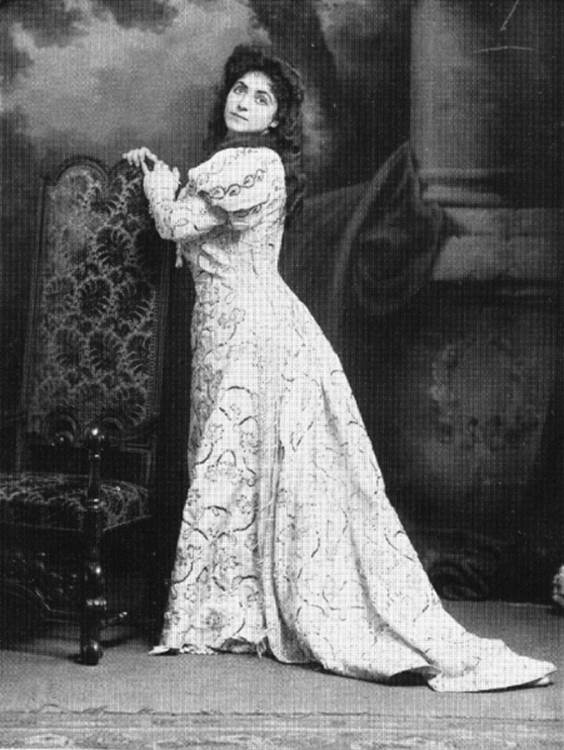 Pauline Donalda singing Juliette in Romeo and Juliette, at Covent Garden, London, in 1905.Photo Credit : Alex Dworkin Canadian Jewish Archives
Pauline Donalda singing Juliette in Romeo and Juliette, at Covent Garden, London, in 1905.Photo Credit : Alex Dworkin Canadian Jewish Archives -
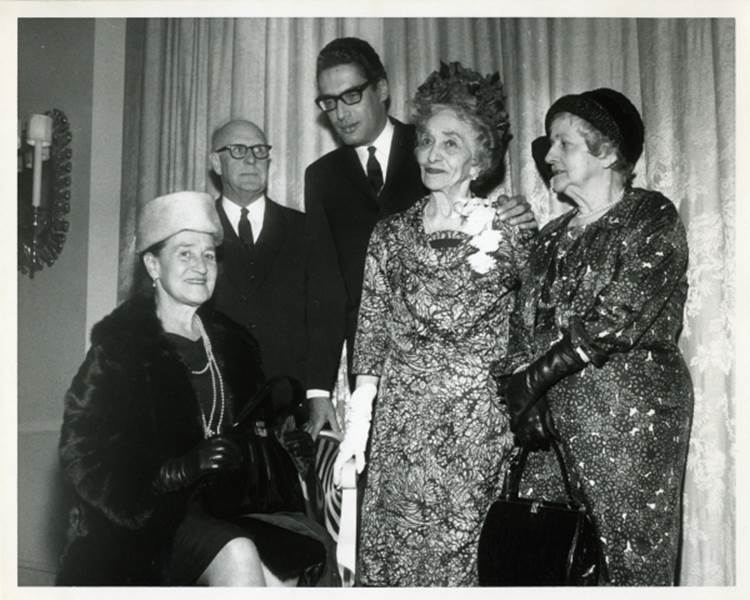 Donalda with friends and supporters, ca. mid-1960sPhoto Credit : Jewish Public Library Archives
Donalda with friends and supporters, ca. mid-1960sPhoto Credit : Jewish Public Library Archives -
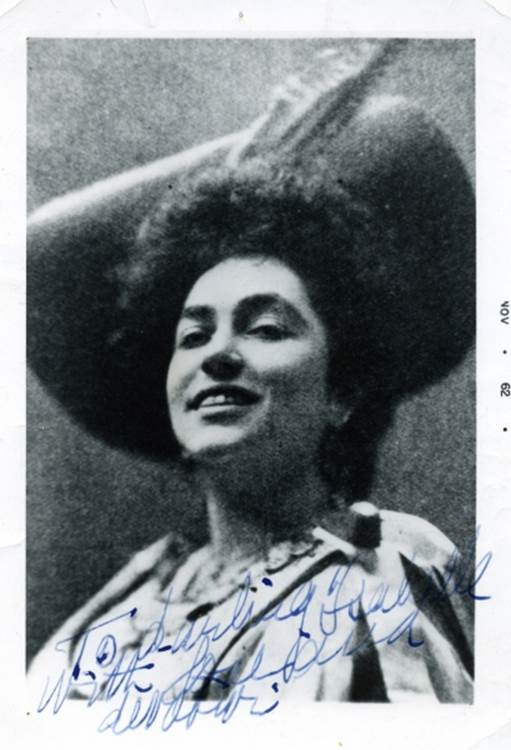 Autographed portrait of Donalda. Photo dated Nov. '62, though it was taken most likely circa 1905-1910.Photo Credit : Jewish Public Library - Archives
Autographed portrait of Donalda. Photo dated Nov. '62, though it was taken most likely circa 1905-1910.Photo Credit : Jewish Public Library - Archives -
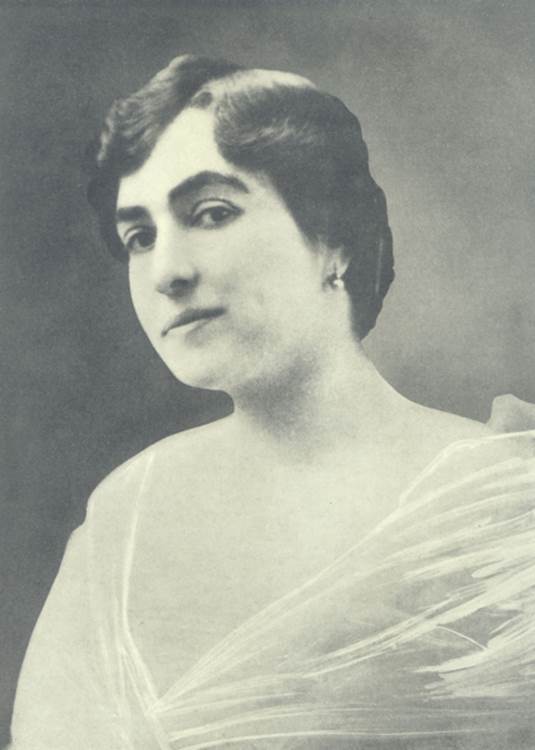 Pauline Donalda portrait from The Jew in Canada, 1926.Photo Credit : Alex Dworkin Canadian Jewish Archives
Pauline Donalda portrait from The Jew in Canada, 1926.Photo Credit : Alex Dworkin Canadian Jewish Archives
Pauline Donalda
Pauline Donalda (née Lightstone), was a Montreal-born opera singer of international renown who was made an Officer of the Order of Canada for her contributions to Canadian arts and culture.
Born into a family of Eastern European immigrants, Donalda studied opera at the Paris Conservatory with financial support from the influential politician Donald Smith (Lord Strathcona). In honor of his sponsorship, she later adopted the stage name “Donalda.” After a successful debut in Nice, France, in 1904, her artistic career quickly took off. In 1905, she sang at London’s Covent Garden for the Queen of England and at The Brussels Royal Opera House. In 1906, she sang alongside tenor Enrico Caruso in a Verdi opera. These performances earned her tremendous acclaim. In the same year, she joined the Manhattan Opera House, founded by the American musical comedy composer and producer Oscar Hammerstein. When World War I broke out, she suspended her career and organized benefit concerts to support the war effort.
From 1922 on, she devoted herself to teaching voice. Twenty years later, in 1942, she founded the Opera Guild of Montreal, which went on to stage the first Canadian performances of many operas.
Donalda was among the first women to promote opera. In so doing, she helped promote both Canada and the Jewish community worldwide.
Special thanks to the Museum of Jewish Montreal.
Learn more:
http://imjm.ca/location/1793
http://thecanadianencyclopedia.ca/en/article/pauline-donalda-emc/
http://www.cjhn.ca/en/permalink/cjhn158

